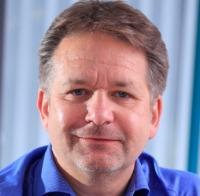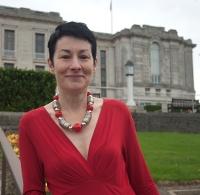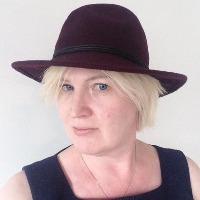Blog
Unless otherwise stated, content is shared under CC-BY-NC Licence
Long-term sustainability: what does it REALLY mean for your digital content?
Jon Tilbury is Chief Innovation Officer at Preservica
Institutions and individuals working in Digital Preservation are rightly concerned about the long-term sustainability of the technology or service providers they trust to look after their material. However, the meaning of “sustainability” is much broader than often appreciated.
Keeping it FAIR: Providing Access to Reusable Data at the Archaeology Data Service
Olivia Foster is Digital Archives Officer at the Archaeology Data Service in York, UK
Staff at the Archaeology Data Service (ADS) have been busy over the last year archiving the data deposited with us, collaborating with partners and rolling out the new OASIS online archaeological reporting system. Digital preservation is one of the core activities of the ADS and as a digital archive we preserve and make publicly accessible archaeological and heritage data in our archives and the ADS library.
The National Archive’s new Transfer Digital Records Service: The Hard Drive forward
Kirsten Arnold is Service Owner for Digital Selection and Transfer at The National Archives in the UK
Hi. I’m the Service Owner for Digital Selection and Transfer (DST), working within Digital Archiving at The National Archives (TNA). DST works closely with records creators to help them understand, provide advice and facilitate the transfer of their selected digital public records to The National Archives. These record creators specifically are public record bodies, and in the main UK government departments.
Breaking down barriers with DiAGRAM
David is a senior digital archivist at The National Archives in the UK.
Original development

With DiAGRAM (the Digital Archiving Graphical Risk Assessment Model) we are trying to break down barriers to digital preservation in two ways: firstly, to help archivists make progress with digital preservation by showing them which interventions will have the greatest impact in reducing the risks to their digital materials; secondly by making sure that the tool itself does not present barriers to being used by anyone who needs it.
Breaking down Barriers in Wales Through the Iffy Tiff
Sally McInnes is Chair of the Archives and Records Management Digital Preservation Group at the National Library of Wales
In Wales, we have been working for many years to break down barriers to digital preservation through working collaboratively to increase capacity and skills. The publication of the National Digital Preservation Policy and accompanying Technical Appendix, on Digital Preservation Day in 2017, aimed at ensuring digital resources of enduring value would be selected for preservation and remain authentic and accessible in the future and to raise awareness of the importance of digital preservation for stakeholders and decision makers. The policy framework is supported by the development of a technical solution, which links Archivematica, Fedora and the National Library of Wales’s Digital Archive, whilst providing access to content through the discovery systems which are managed by the partners.
Building relationships and building collections
Rachel MacGregor is Digital Preservation Officer at the Modern Records Centre, University of Warwick
Making connections with people is always important when working in digital preservation – without connecting with our creators and our users (potential and actual) there is nothing to preserve and no one to preserve it for. We can sometimes get too focussed on our digital collections as a bunch of bits and bytes but in very real terms what we have is stories and experiences, told through a dizzying variety of file formats, content types and platforms. It’s our job to make sure those stories are preserved – and the context around them – to make them meaningful and accessible for future generations.
New Models for Preservation: Photogrammetry at the University of St Andrews Libraries and Museums
Sean Rippington is Digital Archives and Copyright Manager at the University of St Andrews
Photogrammetry – taking overlapping photographs of an object and converting them into 3D digital models – has become business as usual for the University of St Andrews Libraries and Museums. Driven by the push to provide more, different, and better types of online access to our collections for teaching and learning during the pandemic, we now have over 170 examples on our IIIF-based Collections site. Many of the models have already been used in our Exhibit teaching and engagement tool, developed to provide new, curated, almost tactile encounters with digital objects. Some of our favourites include:
From an acorn (bit) a mighty oak forest (repository) grows: Developing digital preservation capability in Nottingham
Jaana Pinnick is Grants Manager and Research Data and Digital Preservation Manager at the British Geological Survey
A.K.A. a brief timeline of the digital preservation journey at British Geological Survey (BGS) and National Geoscience Data Centre (NGDC) over the last few years
Around this time in 2016, the initial thoughts I had had to explore digital continuity and preservation needs at BGS were starting to develop further. I had finished my MSc thesis on “Exploring digital preservation requirements: A case study from the National Geoscience Data Centre (NGDC)” which led to my first peer-reviewed article being published in the Records Management Journal. During my studies I had discovered that our parent body UKRI (then still RCUK) was a member of the DPC, so I approached Juan Bicarregui, Chair of the DPC who works at the Science & Technology Facilities Council (STFC) to ask if I could join. I soon got in the habit of attending DPC events, meeting William, Sarah, Paul and others, not forgetting other digital preservationists from around the world and learning a lot from them. Their jobs sounded fascinating so I took a Post-Graduate Diploma in Digital Preservation at the University of Aberystwyth with Sarah Higgins, and learned some more. But what next?
The WDPD2021 file format karaoke!
World Digital Preservation Day is a chance to talk about our digital preservation challenges and some of the progress we have made, both individually, and as a community. Of course, it is also a chance for the community to come together and have a bit of fun in the name of awareness raising.
One of the things I enjoy most about World Digital Preservation Day is the musical contributions. There is no doubt there is some talent in our community of digital preservationists.
But this year I wondered what would happen if we invited our file formats to take to the floor and have a go at singing. As you can see, they embraced this challenge with great enthusiasm.
Deletion Rebellion: The BitList in 2021
There’s a paradox about World Digital Preservation Day this year. 2021 might well be marked as the year of the great deletion. Barely a day has passed without a news story about some curious deletion or obfuscation which has inhibited prosecution, denied transparency, disrupted science or defeated accountability. And yet, the digital preservation community has grown in number and in skills over this same period. What’s going on? How can both of these statements be true at the same time? The BitList provides something of an answer: that capability is ahead of policy.
























































































































































